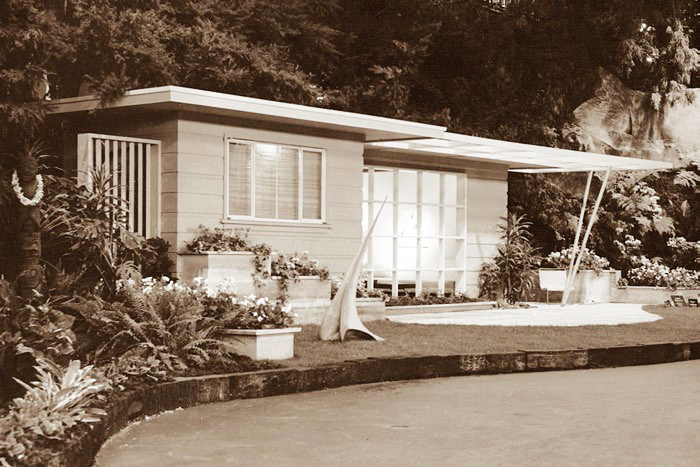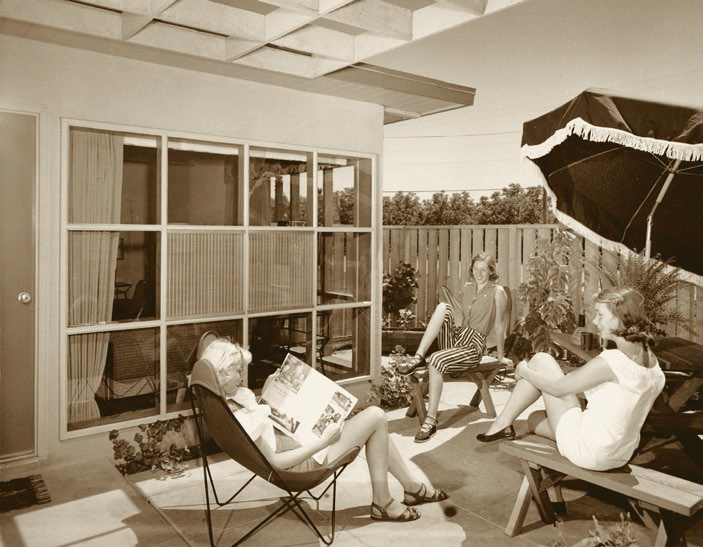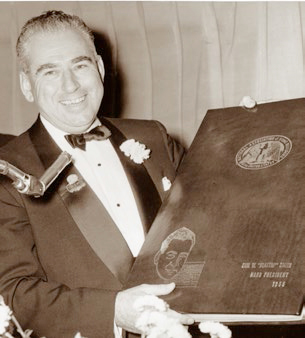King of the Flat-tops - Page 5
 |
|
|
 |
|
|
 |
|
|
"Everybody knew about him," Geoff says. "He was a nationwide phenomenon. He was a VIP wherever he went."
Besides frequent trips to Washington, D.C. and elsewhere in the United States as a leader of the NAHB, Smith visited Ecuador, and the Soviet Union, where he posed with a group of smiling housing officials beneath an oversized portrait of Stalin. He also advised war-ravaged Korea how to increase its housing stock.
Earl Smith was a big sports fan and an amateur painter throughout his life, even painting a South Seas mural for the Oakland bar Zombie Village, which was owned by a friend.
"He was very well spoken and well read," his daughter-in-law Marjie Smith says. "He could talk on any subject any time. He was a real orator."
Smith also had a social conscience, taking pride in one of his earliest neighborhoods, Parchester Village, which was advertised as offering "Homes for all Americans."
Several years before Smith began building flat-tops, he had worked with a Negro woman on her plan to build about 30 homes, and learned much from her, according to House and Home.
In the late 1940s he worked closely with leaders of the black community in and around Richmond, who wanted homes for black veterans and former war workers, many of whom had recently been displaced from temporary war housing.
At that time, few people would sell or rent to blacks, or build houses for them. What's more, many East Bay real estate brokers hoped the black families who had moved to the Bay Area during the war would pack up and return to the south.
"Sometimes people from other areas would visit him [Earl], even back then," Geoff says. "He would take them to visit [Parchester Village in Richmond]. 'You've got a black guy living there!' they would say.
"He said, 'My friend, they're all black.'"
Earl Smith, who divorced Dee in the late 1950s, married a much younger woman and built himself a large home in the Berkeley Hills that was nothing like a Cape Cod. The open-planned, wood-paneled home was "Japanese in every respect," the Berkeley Daily Gazette reported.
Smith retired in the mid-1980s but suffered a devastating stroke a few years later. When the Oakland Hills fire ripped through the area in 1991, destroying Smith's home, firefighters pulled him to safety. "He never recovered mentally," Geoff says.
Although 'Flat Top' Smith may have built as many modern homes as Eichler, they have not in general been as well preserved. Many have lost their looks, and all have lost their fame. Today, many original flat-tops are no longer flat-topped.
"There was a period of time when these homes were very popular, like the Chrysler Airflow," Geoff Smith says. "Everybody loved them. Then they just became funny-looking houses again."
And because they lacked much of the Eichler flair, Earl Smith's homes today have much less aesthetic appeal. And many of the low-cost neighborhoods in which they were built remain low cost today. Hence Smith's flat-topped homes fail to attract attention from mid-century modern fans.
But 'Flat Top' Smith probably wouldn't have cared. He'd be more satisfied to know that the neighborhoods he built remain livable, and often attractive places for the working-class men and women he had always wanted to house.
Photography: courtesy Duncan Smith




